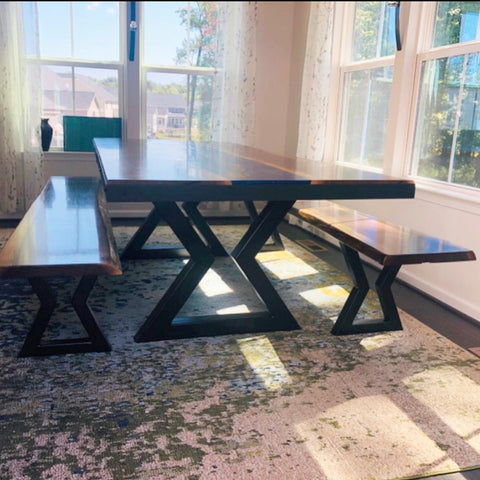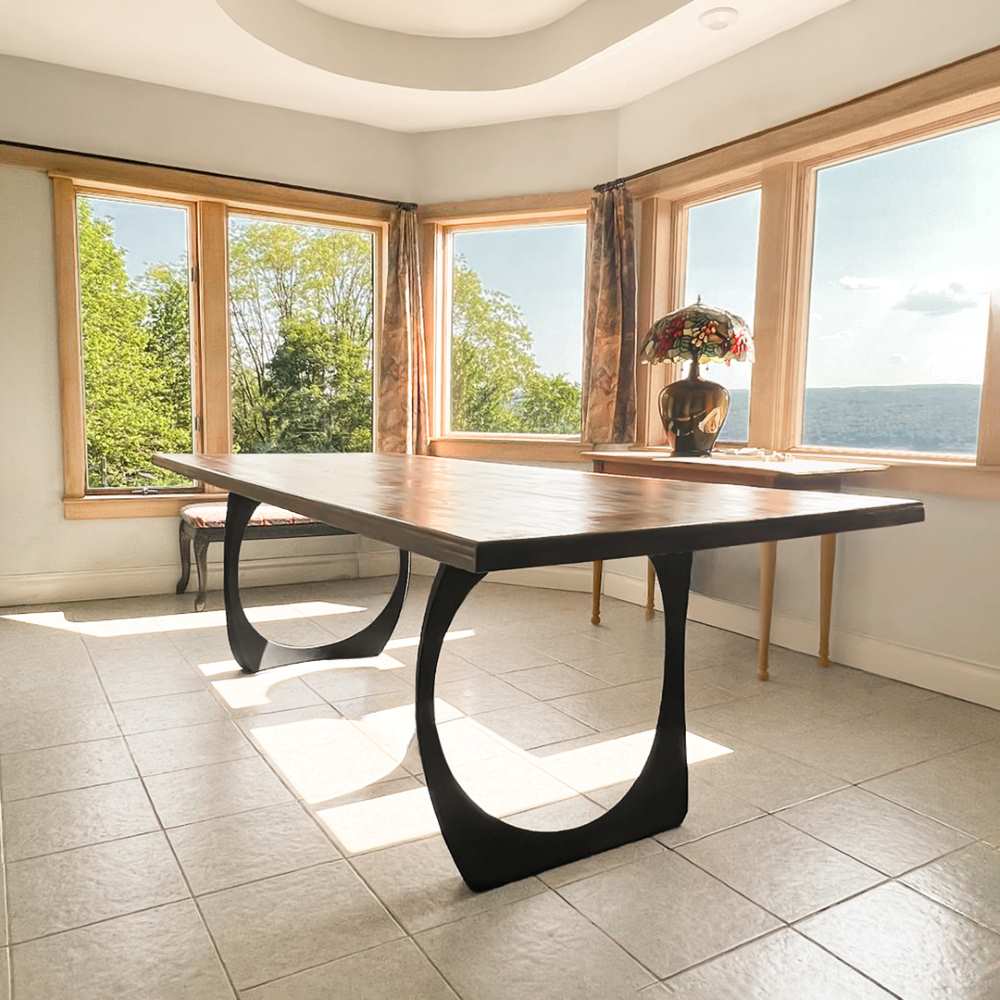How the Right Dining Room Table Legs Can Complete Your Dining Room Look
How the Right Dining Room Table Legs Can Complete Your Dining Room Look
Blog Article
From Traditional to Modern: Discover the Ideal Dining Room Table Legs for Your Style
The selection of dining-room table legs plays an essential function in specifying the overall character of your space, bridging the gap in between traditional workmanship and contemporary looks. While classic styles such as cabriole and turned legs evoke a feeling of ageless class, contemporary styles like barrette and geometric options provide a chance for striking visual interest. Evaluating the right equilibrium in between these styles calls for a nuanced understanding of your existing décor and personal preference. As you consider these elements, the concern stays: exactly how can you effortlessly incorporate these diverse leg designs to develop a harmonious dining experience?
Comprehending Table Leg Styles
The range of eating area table leg designs can significantly influence both the appearances and capability of the room. Each leg design contributes distinct visual elements and useful functions, accommodating diverse design choices and use needs. Understanding these designs is essential for choosing the right dining table that straightens with your total interior decoration vision.
For circumstances, conical legs use a clean, timeless look that can improve a room's elegance, while stand bases offer security and optimize legroom, making them suitable for smaller spaces. Barrette legs, a characteristic of mid-century modern-day style, introduce a commercial style, allowing for a ventilated, open feel. Similarly, trestle legs stimulate rustic appeal, offering robust assistance and a sense of eternity.
In addition, the choice of materials plays a significant duty. Wooden legs can bring heat and structure, whereas metal choices typically convey a sleek, modern vibe. Inevitably, comprehending table leg designs is essential for producing a natural dining area that mirrors personal design while guaranteeing usefulness and comfort. By attentively taking into consideration these elements, you can improve both the useful and aesthetic appeal of your dining area.
Typical Table Leg Options
When selecting dining-room table legs, standard alternatives frequently symbolize ageless style and craftsmanship. These designs show an abundant heritage and a dedication to top quality, making them ideal for those that appreciate classic appearances.
Among one of the most legendary standard leg designs is the cabriole leg, defined by its stylish curved form. This design typically features attractive makings and is most typically located in Queen Anne and Chippendale furnishings. An additional prominent choice is the turned leg, which boasts a series of smooth, rounded shapes that supply a classic look while keeping security.
In addition, the straight leg, while simple, uses a basic and durable structure that can blend effortlessly with a selection of tabletop designs. For those attracted to ornate outlining, claw-and-ball feet legs evoke a feeling of majesty and can function as a stunning focal factor in any kind of eating space.
Finally, pedestal bases, although not purely legs, supply an alternate standard choice that enables enough legroom and can be perfectly carved. Each of these traditional leg styles adds to the general ambiance of a dining-room, weding function with aesthetic allure.

Modern Table Leg Designs
Modern table leg styles offer a diverse series of styles that emphasize innovative products and clean lines. These styles typically prioritize capability while working as striking focal points within a dining room. Minimalist aesthetics prevail, with legs crafted from materials such as steel, glass, and engineered timber, which add to a airy and modern feel.
One prominent layout is the hairpin leg, identified by its slim, tapered framework that supplies security without overwhelming the tabletop (dining room table legs). This design is usually located in mid-century modern-day furniture and can effortlessly enhance numerous table shapes. Another fad is using geometric shapes, where legs may tackle asymmetrical or angular kinds, including visual passion and a touch of artistry

Mixing Designs for Special Areas
Typically, house owners seek to develop one-of-a-kind eating areas that reflect their personal design by mixing numerous design aspects. This strategy enables the incorporation of diverse visual appeals, resulting in a harmonious yet unique setting. Combining a rustic wooden table with streamlined, contemporary metal legs can develop a captivating contrast that boosts the space's total allure.
Furthermore, integrating vintage table legs with modern tabletops can stimulate a sense of history while keeping a contemporary perceptiveness. Such combinations not just showcase private taste yet also urge creativity, permitting homeowners to curate an area that really feels both individual and inviting.
Shade plays a vital duty in this mixing process; choosing table legs that complement or contrast with the existing color pattern can enhance aesthetic interest. For instance, whitewashed legs can soften the daring of a dark table surface area, producing a well balanced aesthetic.
Tips for Choosing the Right Legs
Choosing the right table legs is crucial for achieving both capability and visual charm in your eating i thought about this space. Begin by thinking about the total design of your room. Typical setups profit from legs that feature elaborate carvings or transformed layouts, while contemporary rooms might call for streamlined, minimal designs.
Following, assess the height and stability of the legs. dining room table legs. Typical table range between 28 to 30 inches in explanation elevation, so make sure the legs match this dimension for convenience. In addition, robust materials, such as hardwood or metal, can improve stability and durability
Examine the leg form too-- alternatives consist of right, tapered, or pedestal designs. Straight legs supply a traditional look, while tapered legs can include a touch of sophistication. Pedestal bases provide ample legroom and are optimal for smaller areas.
Final Thought
In recap, selecting the perfect eating space table legs requires careful factor to consider of both standard and contemporary styles. By harmonizing leg style, elevation, and product with the general decor, a natural and inviting atmosphere can be attained.
The range of eating space table leg styles can significantly affect both the appearances and performance of the space. Eventually, comprehending table leg styles is essential for producing a cohesive dining location that mirrors personal style while ensuring practicality and convenience.One of the most renowned traditional leg styles is the cabriole leg, identified by its stylish bent shape. Straight look here legs provide a classic appearance, while conical legs can add a touch of sophistication.In recap, choosing the suitable dining space table legs calls for careful consideration of both typical and modern-day styles.
Report this page